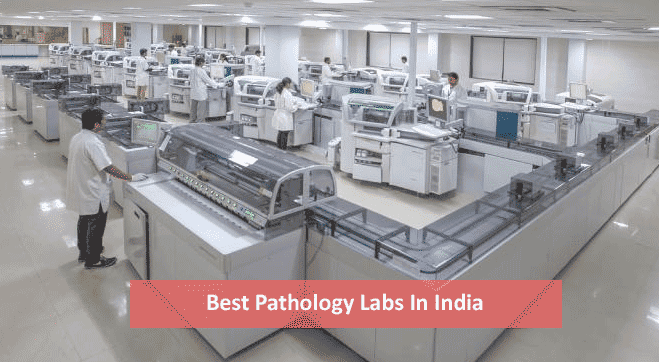Human Papilloma Virus (HPV) is known to cause cervical, anogenital and
oropharyngeal cancers and is prevalent in about 5.2% of cancers in the
world. Abstinence or mutual monogamy throughout life are the only
strategies that could prevent all genital HPV infections. Implementation
of routine screening of female population having a high index of suspicion
through regular Pap smear tests has proved to be unsatisfactory, even in
developed countries.
Whereas large-scale periodic screening is difficult to
achieve in developing countries like India, due to the absence of adequate
resources. Secondly, the infection is asymptomatic, except for genital warts,
which makes detection more difficult. This has led to an increase in the
cervical cancer burden of India and thereby, alternate strategies are required
to lessen this burden. The recent development of prophylactic HPV vaccines
aimed at preventing cervical Cancer and its precursors has given rise to an
opportunity to curb this epidemic.
Structure of HPV
HPV is a non-enveloped double stranded DNA virus with a genome of
8000 base pairs encoding two protein types.
Currently, more than 170 different HPV types are identified, of which
40 are purely mucosal sub-types that include the 15 high-risk oncogenic
types. The maximum number of HPV infections occur during the early
years. However, most HPV infections are transient and are spontaneously
cleared by the host's immune system except in susceptible and
immunocompromised individuals, where they survive and lead
to pre-invasive and invasive lesions of the genital tract known as genital warts.
Principle and Mechanism of Action of HPV Vaccine(s)
The antigen used in the vaccine is the L1 surface protein of the targeted
HPV types. The L1 protein selfassembles into Virus-like Particles (VLPs)
by undergoing conformational changes in artificial production systems.
As the VLPs lack the viral DNA essential to initiate carcinogenesis, they
are noninfective and non-pathogenic. To ensure robust and long-lasting
immunogenicity of the vaccine, adjuvants are used which include aluminium
hydroxylphosphate sulphate in the quadrivalent and the 9. valent vaccine
and a combination of aluminium phosphate and monophosphoryl lipid A
in the bivalent vaccine.
After vaccination, a strong antibody response (IgG) is generated due to
the recognition of the L1 proteins by the immune system in the regional
lymph nodes. The concentration of the antibody levels induced is 1-4 logs
higher than what is induced by the natural HPV infections. The IgG is
released at the possible sites of infection (mucosa of genital tract, oral
cavity, etc.), the virus is neutralized and its entry is prevented into the
cells. Therefore, each time the body is exposed to a HPV infection, the
circulating plasma cells and memory B-cells formed by the vaccine-induced
immune memory allows generation and exudation of protecting IgG in more
than 99% of the vaccinated girls and women, the HPV vaccines were found
to be highly immunogenic, leading to conversion from seronegative to
seropositive condition
Types of HPV Vaccine(s) and Dosage
Globally, three types of vaccines are available against HPV-the bivalent
(Cervarix) which targets HPV 16 and 18, the quadrivalent (Gardasil)
which targets HPV 16, 18, 6 and 11, and 9-valent (Gardasil 9) which
targets HPV 16, 18, 6, 11, 31, 33, 45, 52 and 58. Out of these, only
Carvarix and Gardasil are available in India. HPV 16 and 18 cause
the greatest risk of cervical cancer and thereby, are targeted by
all the vaccines. Currently, research is focused on developing
the next generation vaccine which is more affordable, more
thermostable, has more coverage towards larger number of
strains and can be used as a therapeutic too.
For females below the age of 15, the recommended dosage is
two intramuscular doses at 6 months interval whereas for
females above 15 years and with compromised immunity,
three doses over a 6-month period are recommended.
Efficacy and Effectiveness of HPV Vaccine(s)
All the vaccines available against HPV are not therapeutic, but
prophylactic. There is no evidence for protection against disease
caused by vaccine types for which participants had positive
results on polymerase chain reaction at baseline. However,
it was found that participants who were already positive to
any vaccine type before vaccination, acquired protection
against disease caused by other vaccine types. Furthermore,
99-100% efficacy was reported against vaccine-type related
genital warts, vaginal and vulvar intraepithelial neoplasia.
In a set of participants, follow-up studies over 5 years showed
continuous protection and good response to booster immunization.
Immunogenicity studies showed the antibody titres in females aged
9-15 years to be non-inferior to those aged 16-26 years. After the
third dose, a gradual decline was observed in the antibody titres,
but reached a plateau by 24 months. After 36 months, anti-HPV-16
titres in vaccinees remained higher than those in the control group
who were seropositive at baseline. This showed that antibody titres
produced after vaccination were higher than those produced during
natural infection. The minimum protective titre has not been determined
yet. In a combined study of all the participants over 3 years and a subset
through 5 years, efficacy against vaccine HPV type disease was found to
be 95.8% whereas efficacy against vaccine-type-related cervical intraepithelial
neoplasia or external genital warts was found to be 100%. Studies having a
longer follow-up are being carried out to get a better understanding
of the situation.
Immunogenicity studies in children aged 9-15 years were conducted
to assess the performance of the vaccine in younger female patients.
After the third dose, the anti-HPV responses were identical to those
of female patients aged 16-26 years. After 18 months to vaccination,
anti-HPV titers in younger patients were found to be 2-3 times
greater than that in older patients.
Safety, Side Effects and Contraindications of HPV Vaccine(s)
As the the vaccine contains no live virus, it would not be able to
cause an infection and thereby, is considered safe. Although, no
serious vaccine-related adverse





















































